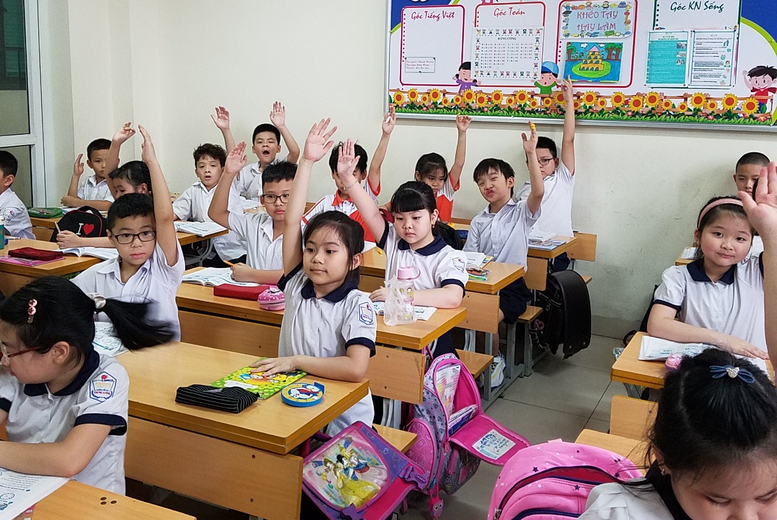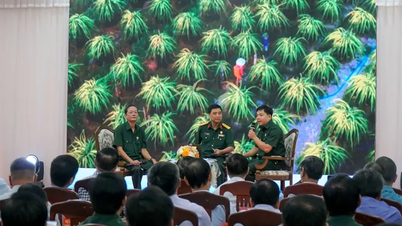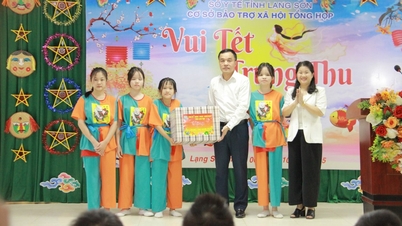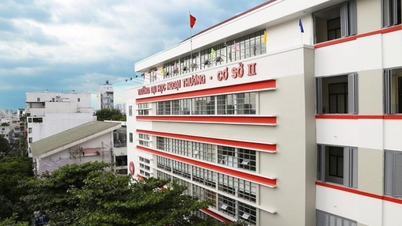
Responding to urgent needs of schools in emulation, rewards and student discipline
This Circular applies to educational institutions with students studying general education programs, continuing education programs at junior high school and high school levels.
At the same time, it stipulates specific responsibilities of schools, principals, teachers, students, students' families and the Department of Education and Training in implementing and monitoring regulations on rewards and discipline of students.
The issuance of Circular No. 19/2025/TT-BGDDT (Circular 19) aims to complete the system of documents guiding the implementation of the Law on Education, the Law on Emulation and Commendation and in accordance with the Law on Children and the current legal system. Unifying and streamlining the system of legal documents, while strengthening decentralization and delegation of authority to meet the urgent needs of schools in emulation and commendation work for students.
Circular No. 19 is consistent with the spirit and principles stipulated in the 2019 Law on Education and the 2016 Law on Children, and is significantly different from the old regulations in Circular 08/TT dated March 21, 1988 of the Ministry of Education guiding the commendation and discipline of students in general schools.
Circular No. 19 inherits and promotes the regulations on rewards and discipline that have been effectively implemented in the recent past; ensuring the implementation of goals, nature, principles and development of education.
Strengthening decentralization and delegation of authority in student reward and discipline work
Circular 19 applies to more types of educational institutions, including continuing education centers (GDTX), vocational education centers – GDTX and secondary schools and colleges with students studying general education/GDTX programs in junior high school and high school. Previously, Circular 08 of 1988 focused mainly on general schools.
Strengthening decentralization and delegation of authority to schools in the work of rewarding and disciplining students. This is a suitable direction to improve the initiative, flexibility and efficiency in educational management; ensuring the principle of autonomy coupled with accountability. This regulation aims to reduce pressure on the superior management agency and shorten the processing procedure.
In addition, Circular No. 19 supplements humanistic principles for the progress of students, enhances autonomy and self-responsibility of managers and teachers; ensures coordination between schools, families, and society; emphasizes the role of education and comprehensive development of students.
"Letter of commendation" is a new form of reward.
According to the Circular, there are 5 forms of commendation. Compared to the old regulations, Circular 19 has removed specific titles and honorary boards from the list of official forms; simplified formal procedures, focused on implementing the principles of commendation and the regulations in the Law on Emulation and Commendation.
The form of "Letter of Commendation" is a new and clear form of commendation in Circular No. 19. Letter of Commendation is given to students who have improved academic and training results, surpassed themselves or have outstanding achievements. This form can be carried out by teachers, Principals or higher management levels depending on the nature and level of achievement.
Circular No. 19 clearly stipulates that there may be other appropriate forms of commendation and reward implemented by agencies, organizations and individuals to provide timely encouragement. This demonstrates the expansion and flexibility in the work of commendation.
It is strictly forbidden to use disciplinary measures that affect students' physical and mental health.
On the principle of discipline, Circular No. 19 adds principles such as respect, tolerance, non-prejudice, ensuring the rights and interests of students. In particular, it strictly prohibits the use of disciplinary measures that are violent, insulting to the dignity, and affecting the physical and mental health of students. This demonstrates a strong shift to a humane approach to disciplinary education that respects students.
At the same time, Circular No. 19 supplements prohibited violations under the Law on Education and provides specific classification of violation levels: Level 1 (harm to oneself), Level 2 (negative impact within the group, class), Level 3 (negative impact within the school).
Regarding the system of disciplinary forms , Circular No. 19 divides disciplinary forms according to school levels. Accordingly, for primary school students, there are only 2 measures: Warning (applied to level 1) and Request for apology (applied when re-offending level 1 after warning or level 2 or higher).
For students outside of primary school, there are only 3 measures: Warning (applied to level 1), Criticism (applied when re-offending level 1 after warning or level 2), Requiring to write a self-criticism (applied when re-offending level 1/2 after previous measures, or level 3).
Severe forms of discipline such as Reprimand before the Disciplinary Council, Warning in front of the whole school, Expulsion for one week, Expulsion for one year according to the old regulations have been eliminated in Circular No. 19. The measures of Requesting an apology and Requesting to write a self-criticism are new forms clearly stated in Circular No. 19.
Ensure proper implementation of the authority, functions and responsibilities of the school
Circular No. 19 does not stipulate that disciplinary measures against students be recorded in records and transcripts. It only stipulates that student self-criticisms be kept in school records. This shows humanity, progress, and the development of students in student discipline.
In addition, Circular No. 19 also stipulates a number of key support activities such as advising, motivating, monitoring, consulting, requesting appropriate activities, and coordinating with families. The old regulation only mentioned the general principle of having a monitoring plan and helping with correction.
This change represents an educational, supportive and humane approach to discipline, in line with the country's educational innovation context and modern educational trends. The new regulation ensures the proper implementation of the authority, functions and responsibilities of schools in educating students, without setting out regulations for serious violations (due to the responsibility of competent state agencies to consider and resolve according to regulations)./.
Source: https://baolangson.vn/nhieu-diem-moi-ve-khen-thuong-ky-luat-nhan-van-vi-su-tien-bo-cua-hoc-sinh-5059509.html





![[Photo] Prime Minister Pham Minh Chinh chairs a meeting of the Government Standing Committee to remove obstacles for projects.](https://vphoto.vietnam.vn/thumb/1200x675/vietnam/resource/IMAGE/2025/10/06/1759768638313_dsc-9023-jpg.webp)


























































































Comment (0)